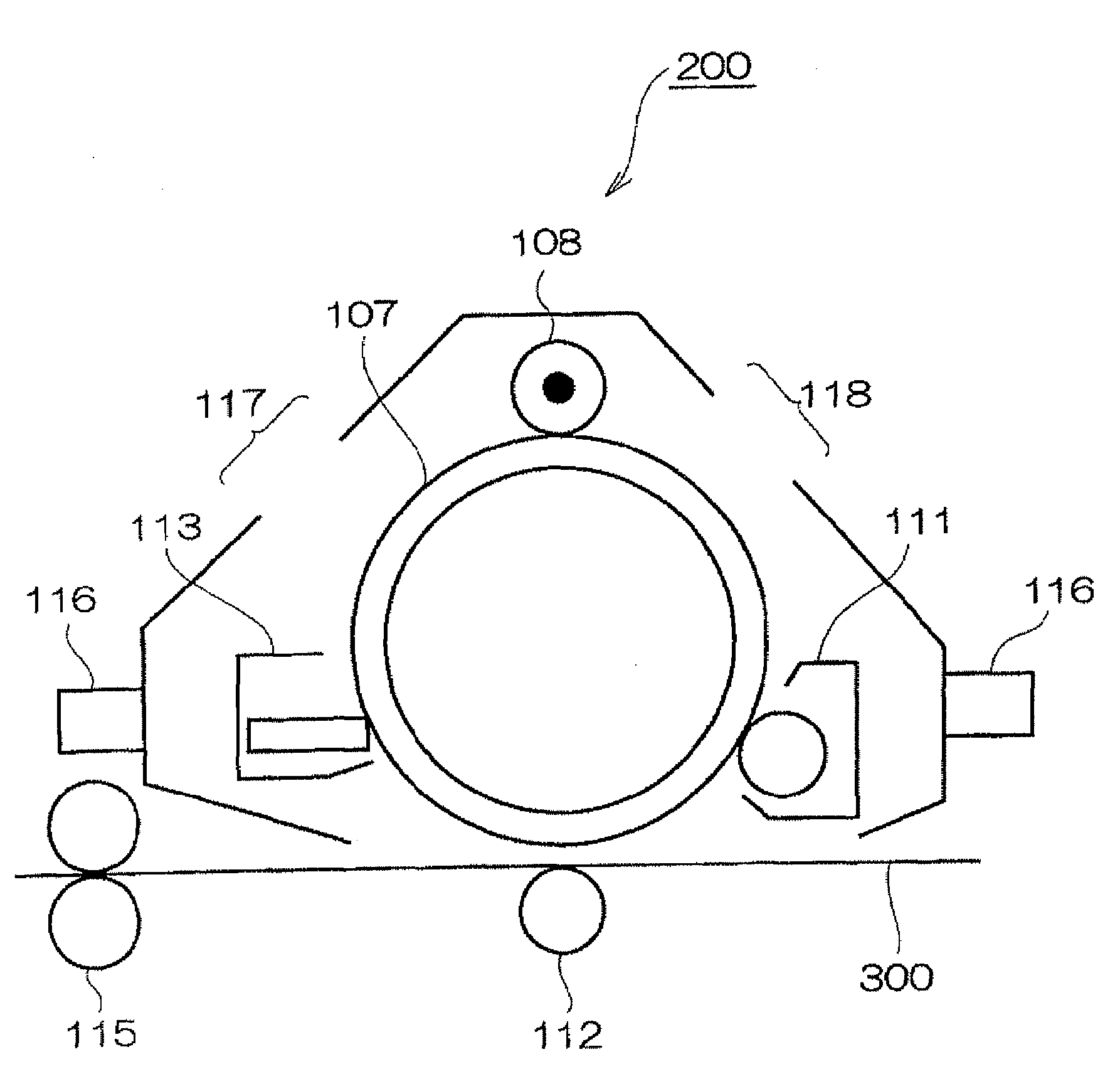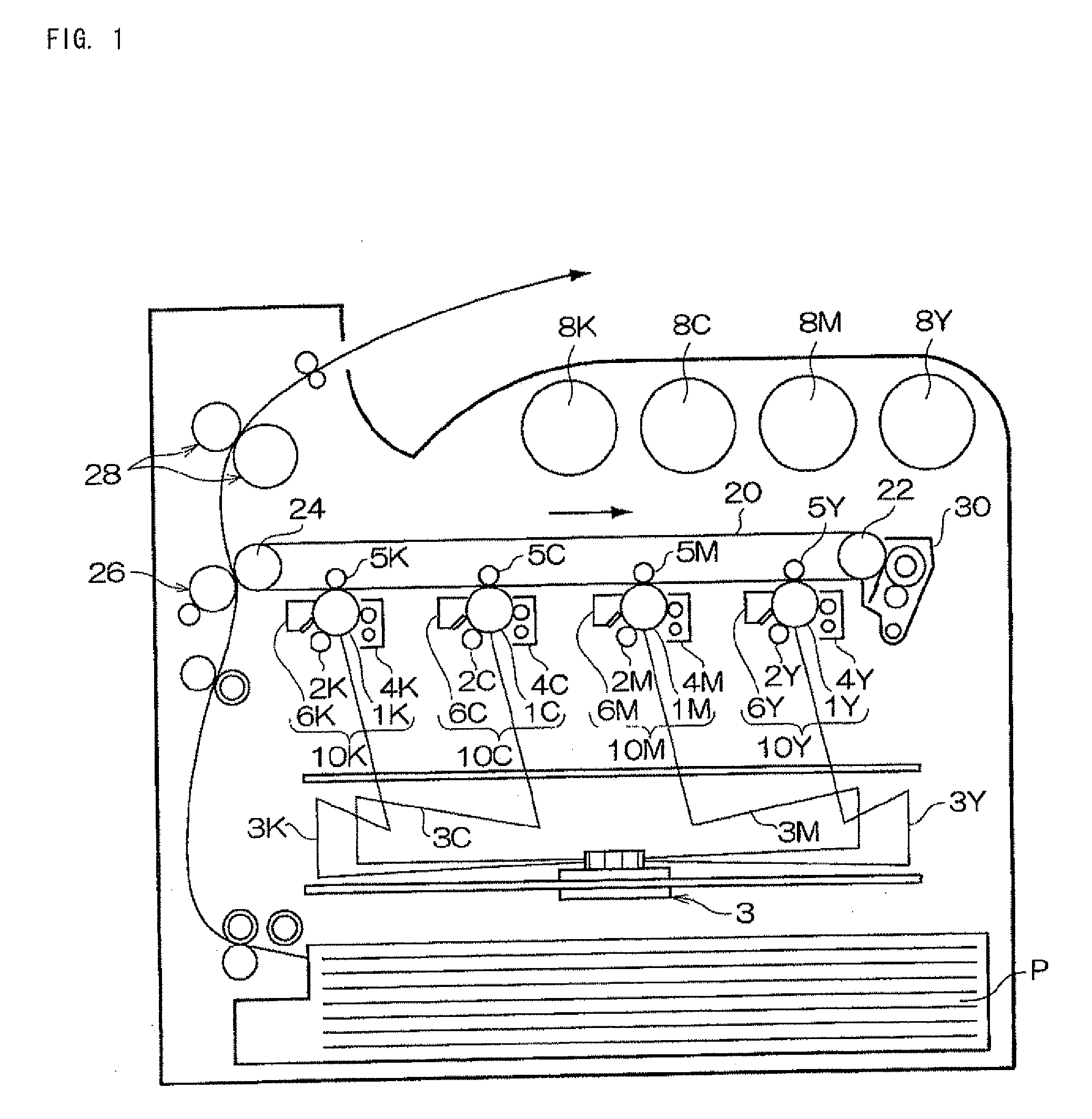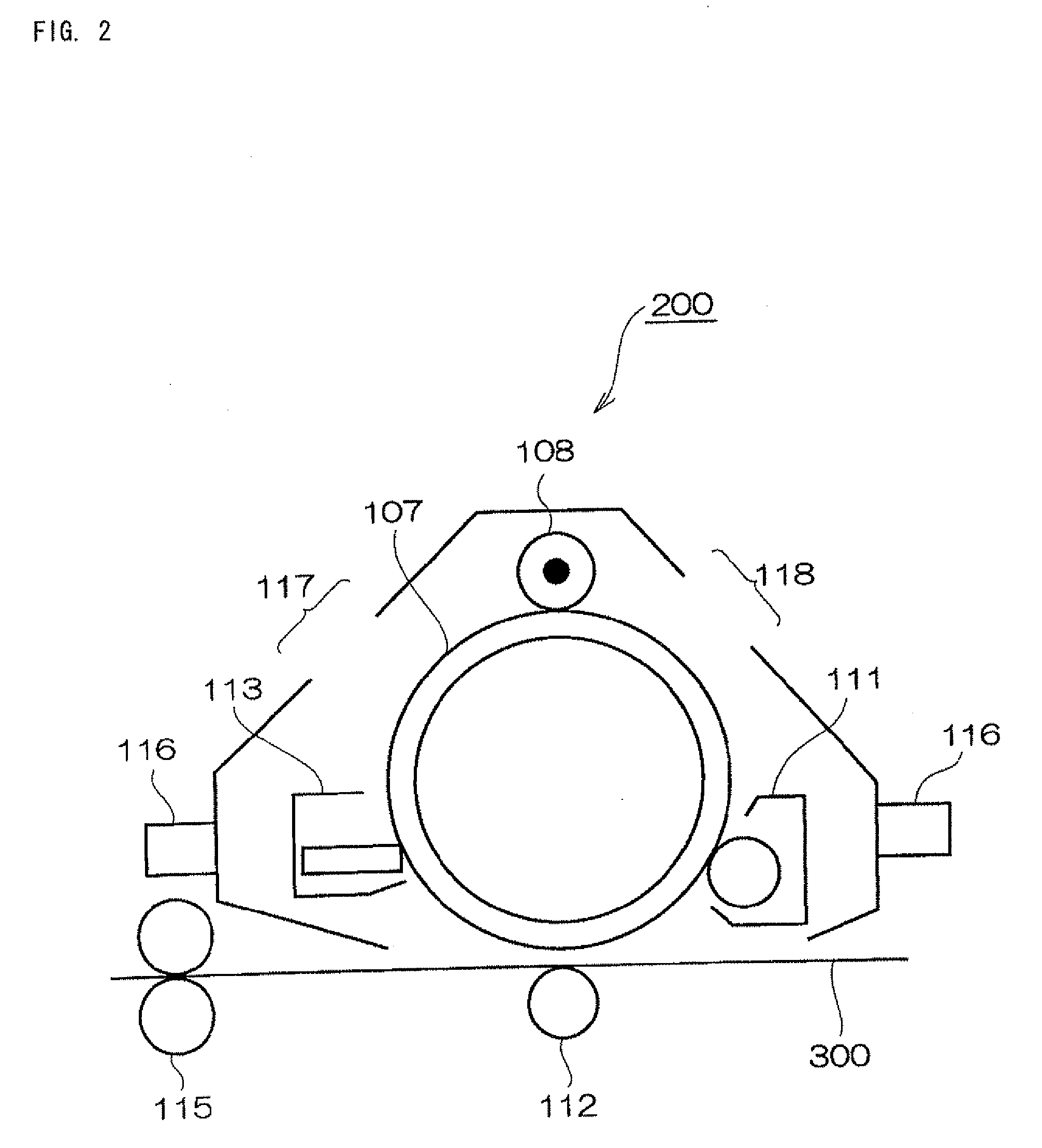Toner for development of electrostatic image, electrostatic image developer, toner cartridge, process cartridge, and image forming apparatus
a technology for developing electrostatic images and toner cartridges, which is applied in the direction of electrographic process, electrographic process apparatus, instruments, etc., can solve the problems of inability to achieve high image quality and high reliability, and the loss of the storability of the toner formed on a fixed image, so as to achieve the maximum width of an image defect
- Summary
- Abstract
- Description
- Claims
- Application Information
AI Technical Summary
Benefits of technology
Problems solved by technology
Method used
Image
Examples
example 1
[0222](Preparation of Toner)
[0223]Toner matrix particles (1) are prepared in the following process.
[0224]95.0 parts of the non-crystalline polyester resin dispersion (C), 95.0 parts of the non-crystalline polyester resin dispersion (D), 18.0 parts of the crystalline polyester resin dispersion (B), 22.0 parts of the colorant dispersion and 50.0 parts of the releasing agent dispersion (H) are put in a round stainless steel flask and the pH is adjusted to 2.5 using a nitric aqueous solution, and are sufficiently mixed and dispersed by a homogenizer (trade name: ULTRA-TURRUX T50). Subsequently, 0.35 parts of polyaluminum chloride is added and the dispersion process is continued. Thereafter, the flask is heated to 48° C. in an oil bath while agitating and left to stand for 60 minutes at 48° C., and 33.3 parts of the non-crystalline polyester resin dispersion (C) and 33.3 parts of the non-crystalline polyester resin dispersion (D) are further added therein. The pH in the system is then ad...
example 2
[0261]Toner with an external additive (2) is prepared using the same materials as those of toner with an external additive (1), but under the different conditions as described below.
[0262]First, the pH of the mixture in the aforementioned round stainless steel flask is adjusted to 2.8 with a nitric aqueous solution, and sufficiently mixed and dispersed by ULTRA TURRAX T50. Next, 0.30 parts of polyaluminum chloride is added to the mixture and dispersing is continued. The resultant is heated in a similar manner to Example 1 to 43° C. and after maintaining at 43° C. for 60 minutes, 33.3 parts of non-crystalline polyester resin dispersion (C) and 33.3 parts of non-crystalline polyester resin dispersion (D) are gradually added. Thereafter, the pH in the system is adjusted to 8.3 with a 0.5 mol / l aqueous solution of sodium hydroxide and heated to 93° C. in a similar manner to Example 1, and allowed to stand for five hours. Other conditions are similar to those in Example 1.
[0263]The obtai...
example 3
[0265]Toner with an external additive (3) is prepared in a similar manner to the preparation of toner in Example 1, except that the addition amount of polyaluminum chloride is changed from 0.35 parts to 0.40 parts and the heating temperature in the oil bath is changed from 48° C. to 50° C.
[0266]The above toner with an external additive (3) has a volume average particle diameter D50v of 8.0 μm, a particle size distribution coefficient GSDv of 1.27, and an average circularity of 0.93. The ratio of particles having circularities of less than 0.85 is 3.0% by number.
[0267]Evaluation of toner with an external additive (3) is conducted in a similar manner to Example 1, and the results are shown in Tables 1 and 2.
PUM
| Property | Measurement | Unit |
|---|---|---|
| temperature | aaaaa | aaaaa |
| temperature | aaaaa | aaaaa |
| temperature | aaaaa | aaaaa |
Abstract
Description
Claims
Application Information
 Login to View More
Login to View More - R&D
- Intellectual Property
- Life Sciences
- Materials
- Tech Scout
- Unparalleled Data Quality
- Higher Quality Content
- 60% Fewer Hallucinations
Browse by: Latest US Patents, China's latest patents, Technical Efficacy Thesaurus, Application Domain, Technology Topic, Popular Technical Reports.
© 2025 PatSnap. All rights reserved.Legal|Privacy policy|Modern Slavery Act Transparency Statement|Sitemap|About US| Contact US: help@patsnap.com



